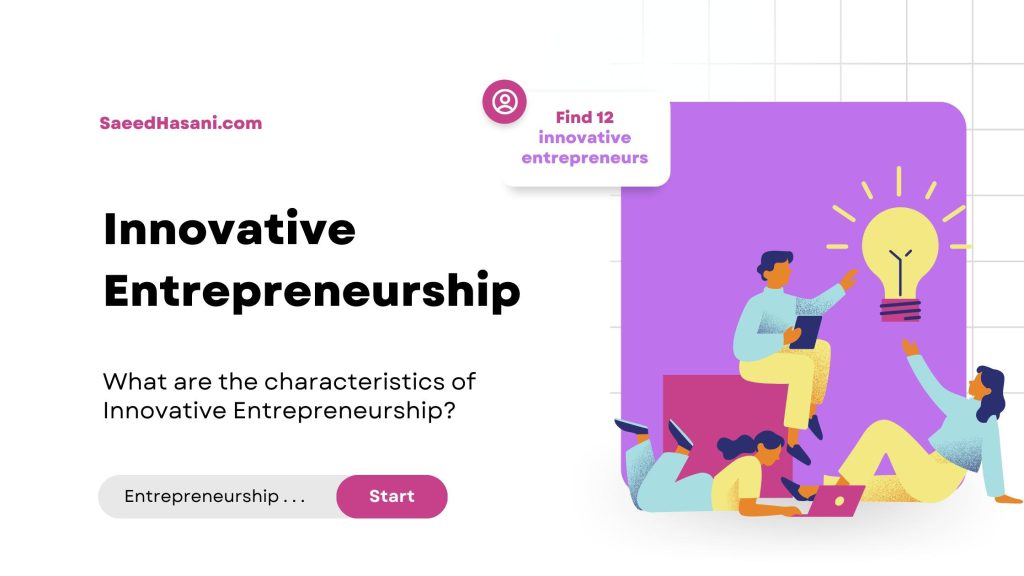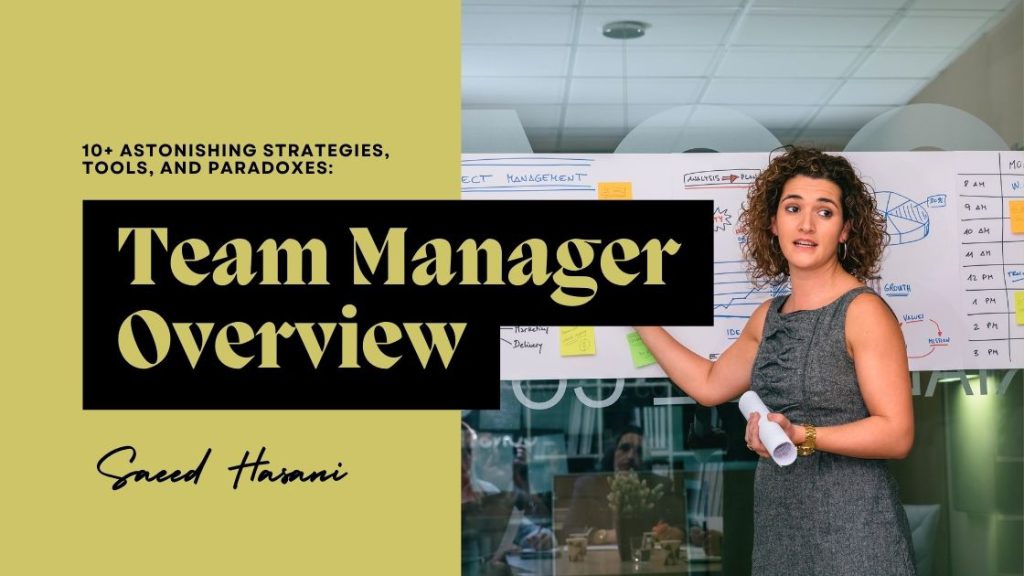Expanding Team: Over 27 Strategies and Approaches!

Are you considering expanding team? Attracting the right talent and seamlessly integrating them into your organization can unlock unprecedented growth. Discover the compelling reasons behind team expansion and master the art of adding value while navigating the challenges that come with it.
Content Overview:
Why do you choose to expand your team?
Choosing to expand a team can be driven by various strategic and operational reasons. Here are some of the primary motivations behind the decision to grow a team:
- Increasing Capacity: Expansion is often necessary to handle increased work volume or to take on more projects. Adding team members can help distribute workloads more evenly and prevent burnout among existing staff.
- Enhancing Skills and Expertise: Bringing in new team members with specific skills or expertise can fill gaps in the current team’s capabilities. This can be particularly important in fast-evolving fields where new technologies or methodologies become critical to staying competitive.
- Supporting Growth and Innovation: As organizations grow, the complexity and scope of their operations typically increase. Expanding the team can support this growth, allowing for innovation and the exploration of new business areas or markets.
- Improving Service and Productivity: Additional team members can enhance service delivery by reducing turnaround times and improving quality. This can lead to higher customer satisfaction and increased productivity.
- Facilitating Knowledge Sharing and Diversity: A larger team brings diverse perspectives and experiences, which can foster creativity and innovation. It also allows for more internal knowledge sharing, contributing to the professional development of team members.
- Strategic Realignment: Sometimes, expanding a team is part of a strategic shift in the organization’s direction. New skills and roles may be necessary to pursue new strategic objectives effectively.
- Succession Planning: Building a team with depth can be a way to prepare for future leadership transitions, ensuring that the organization has the talent in place to fill key roles as they become available.
- Geographic Expansion: Companies looking to expand their presence in new geographic markets may need to grow their teams to provide local support and expertise.
The decision to expand a team should be made carefully, considering the long-term implications on company culture, operational efficiency, and financial sustainability. It often involves balancing the immediate benefits of additional resources against the costs and challenges associated with integrating new team members and managing a larger workforce.

What are the key factors to consider when deciding to expand a team?
Expanding a team is a significant decision that can impact various aspects of an organization. Here are key factors to consider:
- Business Needs and Goals: Assess whether the expansion aligns with the company’s strategic goals and business needs. Determine if the expansion is necessary to meet increased demand, enter new markets, or develop new products or services.
- Financial Health and Budget: Ensure that the company’s financial situation can support the expansion. Consider not only the salaries of new team members but also additional costs such as benefits, training, equipment, and workspace. Conduct a cost-benefit analysis to evaluate the return on investment.
- Workload Analysis: Analyze the current workload to identify gaps and overloads. If your existing team is consistently overburdened, expansion might be necessary to maintain productivity and prevent burnout.
- Skills and Expertise: Identify any skills or expertise gaps in your current team that new hires could fill. Expanding the team provides an opportunity to bring in new talents and perspectives that can drive innovation and efficiency.
- Market Conditions: Consider the current and projected market conditions. Expanding during a growth phase can be advantageous, but it’s also essential to be cautious if the market shows signs of volatility or downturn.
- Operational Capacity: Assess whether your current infrastructure and processes can accommodate more team members. This includes physical space, technology, and management capacity. Expansion should not compromise the quality of work or team dynamics.
- Cultural Fit and Team Dynamics: Consider how new team members will fit into the company culture and affect team dynamics. It’s crucial to maintain a positive and collaborative work environment. Hiring individuals who align with the company’s values and work ethic can contribute to smoother integration and team cohesion.
- Training and Onboarding: Plan for the resources and time required for training and onboarding new team members. A structured onboarding process can accelerate productivity and help new hires integrate into the team effectively.
- Legal and Compliance Issues: Ensure compliance with labor laws and regulations related to hiring, including contracts, benefits, and workplace safety. This is particularly important if expanding the team involves hiring in new geographical locations.
- Long-term Sustainability: Consider the long-term implications of team expansion. It’s important to ensure that the expansion is sustainable over time and that the organization can continue to support its increased size without compromising quality or financial stability.
Deciding to expand a team requires careful consideration of these factors to ensure that the growth contributes positively to the organization’s objectives and sustainability.
What challenges do you face when expanding your team?
Expanding a team can bring numerous benefits, but it also comes with its set of challenges that organizations need to navigate carefully. Here are some common challenges faced during team expansion:
- Finding the Right Talent: One of the most significant challenges is locating and recruiting individuals with the desired skill set, experience, and cultural fit. The competition for top talent can be intense, especially in certain industries and for in-demand roles.
- Maintaining Company Culture: As teams grow, preserving the original company culture and values becomes more difficult. New hires bring their own experiences and perspectives, which can enrich the culture but also potentially dilute or shift the existing dynamics.
- Communication and Collaboration: With more team members, maintaining clear and effective communication can become more complex. There’s a higher risk of miscommunication, and ensuring everyone is aligned and informed can require more structured processes.
- Integration and Onboarding: Successfully integrating new employees into existing teams and getting them up to speed involves considerable effort. A poorly managed onboarding process can lead to lower productivity and morale.
- Management and Leadership: Expansion often requires existing managers to take on more direct reports or the hiring of additional managers. This can stretch leadership capabilities and may necessitate leadership development or adjustments in management structures.
- Cost Implications: The financial impact of expanding a team goes beyond just salaries. Additional costs include benefits, training, technology, office space, and potentially increased administrative support, all of which can strain budgets.
- Resource Allocation: Ensuring that existing and new projects have the right resources while avoiding overstretching the team’s capacity requires careful planning and prioritization.
- Performance Management: With a larger team, monitoring performance, providing feedback, and managing underperformance becomes more challenging. Establishing clear performance metrics and regular review processes is essential.
- Scalability of Processes: Processes that work well for a smaller team may not scale effectively. Operations, from project management to HR practices, may need to be re-evaluated and adjusted to accommodate a larger workforce.
- Legal and Compliance Issues: Expanding teams, especially across borders, introduces a range of legal and compliance issues related to employment law, visas, tax obligations, and workplace regulations.
- Team Dynamics and Conflict: New personalities and working styles can disrupt existing team dynamics and potentially lead to conflict. Managing these dynamics to foster a positive and collaborative environment is crucial.
- Training and Development Needs: Identifying and addressing the training needs of both new and existing employees to ensure the team remains competent and competitive can be challenging.
Navigating these challenges requires strategic planning, clear communication, and a commitment to maintaining the organization’s core values and goals. It often involves leveraging HR technologies, adopting flexible management practices, and fostering an inclusive culture that welcomes new ideas and individuals.
How can Scrum manage the challenges of expanding teams?
Scrum, an agile framework designed for managing and completing complex projects, can be particularly effective in addressing the challenges associated with expanding teams. Here’s how Scrum principles and practices can help manage these challenges:
1. Finding the Right Talent
- Cross-functional Teams: Scrum encourages the formation of small, cross-functional teams. This approach can make it easier to identify specific skill gaps and the types of new team members needed to complement existing capabilities.
2. Maintaining Company Culture
- Scrum Values: The Scrum values of commitment, courage, focus, openness, and respect naturally support a strong, positive company culture. By embedding these values in team practices, Scrum can help new members assimilate these cultural norms.
3. Communication and Collaboration
- Daily Stand-ups: Regular stand-up meetings ensure ongoing communication within the team, helping to integrate new members and maintain alignment on projects.
- Information Radiators: Tools like Scrum boards visually track progress, facilitating transparency and collaboration among team members.
4. Integration and Onboarding
- Sprints: Short, iterative cycles of work allow new members to quickly integrate and contribute to projects, receiving immediate feedback and adjustment opportunities.
5. Management and Leadership
- Scrum Roles: Clear roles (Scrum Master, Product Owner, Development Team) provide a structured environment for management and leadership within the team. The Scrum Master role, in particular, focuses on ensuring the team adheres to agile practices and helps to address obstacles, including those related to team expansion.
6. Cost Implications
- Iterative Development: By delivering work in small, manageable increments, Scrum allows for more predictable budgeting and resource allocation, helping manage the financial aspects of team expansion.
7. Resource Allocation
- Sprint Planning: Regular planning sessions help ensure that resources are allocated efficiently and that the team’s workload is manageable and aligned with priorities.
8. Performance Management
- Retrospectives: Regular retrospectives provide a structured way for the team to reflect on performance, discuss improvements, and address any issues, including those related to the integration of new team members.
9. Scalability of Processes
- Scalable Frameworks: For larger teams, frameworks like Scrum of Scrums can be used to coordinate between multiple Scrum teams, ensuring processes scale effectively.
10. Legal and Compliance Issues
- While Scrum itself doesn’t directly address legal and compliance issues, the framework’s emphasis on regular review and adaptation can help teams stay responsive to these concerns as they grow.
11. Team Dynamics and Conflict
- Emphasis on Communication: Scrum’s emphasis on communication and feedback helps to surface and resolve conflicts early, supporting positive team dynamics.
12. Training and Development Needs
- Continuous Improvement: The Scrum principle of continuous improvement, through practices like retrospectives, helps identify and address training and development needs on an ongoing basis.
Scrum offers a structured yet flexible framework for managing growth and change, making it well-suited to helping teams navigate the complexities of expansion. Its practices encourage constant communication, transparency, and adaptation, which are critical for integrating new team members and maintaining team efficiency and cohesion.
https://chat.openai.com/c/f5dfae7a-9bca-4e31-abeb-85c134e9acd8
How can we maintain our quality by expanding the team?
Expanding a team while maintaining quality is a critical challenge that involves strategic planning, effective communication, and a commitment to your organization’s core values and standards. Here are several strategies to help ensure that quality remains high as your team grows:
1. Clearly Define Roles and Expectations
Documented Processes: Ensure that roles, responsibilities, and expectations are clearly defined and documented. This helps new team members understand their duties and the standards they’re expected to meet.
Quality Standards: Establish clear quality standards for work. Make sure these standards are communicated to all team members, old and new.
2. Invest in Continuous Learning
Skill Development: Provide opportunities for professional development and continuous learning. This ensures that your team’s skills remain sharp and up to date.
Knowledge Sharing: Encourage knowledge-sharing sessions among team members to disseminate best practices and innovative ideas across the organization.
3. Implement Quality Control Systems
Regular Reviews: Implement regular review and quality control checks to ensure work meets the established standards.
Continuous Improvement: Foster a culture of continuous improvement by regularly reviewing processes and outcomes, and making adjustments as needed.
Maintaining quality while expanding a team requires a multifaceted approach that involves careful planning, clear communication, and a commitment to your core values. By focusing on these areas, you can help ensure that your team’s growth strengthens rather than dilutes the quality of your work.
How to add the right people to our team?
Adding the right people to your team is essential for maintaining a high-performance culture, fostering innovation, and ensuring long-term success.
This process involves more than just matching skills to job descriptions; it requires a strategic approach to identify individuals who will thrive in your organization’s unique environment.
Utilize a Variety of Recruitment Channels
Don’t limit your search to traditional recruitment channels. Explore niche job boards, professional networks, industry conferences, and social media platforms to find candidates with the specific skills and background you need. Employee referrals can also be a valuable source of candidates who are likely to be a good cultural fit.
Implement a Rigorous Interview Process
A thorough interview process should include multiple stages and types of assessments to evaluate a candidate’s technical abilities, soft skills, and cultural fit. Consider incorporating practical tasks or projects, behavioral interviews, and meetings with potential team members. Peer interviews can be particularly insightful, as they help assess how well the candidate would integrate with the team.
Assess Potential for Growth
Look for candidates who not only meet the current job requirements but also have the potential to grow and take on new challenges. Assess their willingness to learn, adaptability, and ambition during the interview process. Hiring for potential ensures that your team remains dynamic and can evolve with the changing needs of your organization.
Foster an Environment of Continuous Feedback
Create an environment where feedback is regularly exchanged between team members, including new hires. This culture of openness helps new team members adjust more quickly, encourages continuous improvement, and strengthens the team’s cohesion.
Adding the right people to your team is a nuanced process that requires attention to detail, a deep understanding of your team’s needs and culture, and a commitment to diversity and inclusion. By following these guidelines, you can enhance your team’s performance, innovation, and overall job satisfaction, setting your organization up for long-term success.
What are the behavioral signs of people suitable for your team?
Identifying people who are suitable for your team involves looking beyond their technical skills and experience to observe behavioral signs that indicate they will thrive within your team’s culture, contribute positively to its dynamics, and align with its goals. Here are several key behavioral signs to look for:
1. Adaptability
People suitable for your team often exhibit a high level of adaptability. They demonstrate an ability to adjust to new situations, challenges, and changes in the workplace without losing their effectiveness. Look for individuals who speak about embracing change positively, learning from diverse experiences, and being comfortable with uncertainty.
2. Collaborative Spirit
Collaboration is crucial in most team environments. Candidates who show a strong inclination towards teamwork, actively listen, respect others’ opinions, and contribute ideas openly are likely to fit well in a team that values collective effort. Their past experiences in team projects or collaborative environments can offer insights into their ability to work with others.
3. Problem-Solving Orientation
Individuals who are naturally inclined to tackle challenges head-on, think critically, and creatively find solutions are invaluable to any team. Look for behavioral signs of a proactive approach to problem-solving, such as asking insightful questions, suggesting innovative solutions, and learning from setbacks.
4. Resilience and Perseverance
Resilience and perseverance are critical when facing the inevitable difficulties and failures in any workplace. Candidates who talk about overcoming professional challenges, learning from failures, and remaining motivated in tough times likely possess the grit needed to push through obstacles.
5. Growth Mindset
A growth mindset, the belief that abilities and intelligence can be developed through dedication and hard work, is a powerful trait. Such individuals are open to feedback, eager to learn and improve, and constantly seek opportunities for personal and professional development. They view challenges as opportunities to grow rather than insurmountable barriers.
6. Empathy and Emotional Intelligence
Empathy and emotional intelligence enable individuals to understand and respond to the feelings of others, fostering a supportive and positive team environment. These individuals are attentive to their colleagues’ needs and can navigate social intricacies in the workplace to maintain harmony and collaboration.
7. Accountability
Accountable individuals take responsibility for their actions and their outcomes, whether good or bad. They are reliable, meet deadlines, and uphold their commitments to the team. This trait is crucial for trust-building and ensuring that everyone contributes equally to the team’s objectives.
8. Passion and Enthusiasm
Passion for the work and enthusiasm about the team’s goals can be contagious, boosting morale and driving the team forward. People who show genuine excitement about the role and the company’s mission are likely to be highly motivated and engaged team members.
Conclusion
In conclusion, expanding your team is a multifaceted decision that hinges on various strategic, operational, and cultural considerations.
Whether driven by the need to increase capacity, infuse new skills and expertise, foster innovation, or enter new markets, it’s crucial to approach team expansion with a clear understanding of your goals and the challenges you may face.
By carefully considering factors such as company culture, workload distribution, market conditions, and the long-term sustainability of growth, you can ensure that expanding your team contributes positively to your organization’s objectives and resilience.
Remember, the right expansion strategy can transform challenges into opportunities, driving your team and organization toward greater success.
We’d love to hear your thoughts and experiences on team expansion. Have you faced any particular challenges or found effective strategies in growing your team? Share your insights and join the conversation below.







Responses